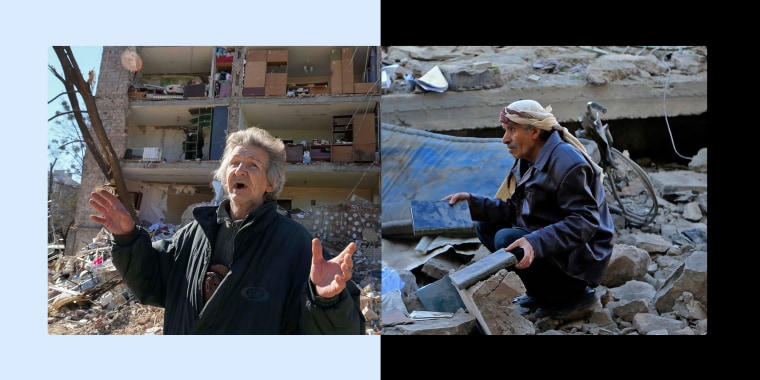


COVID-19 Situation Report

Editor: Alyson Browett, MPH
Contributors: Clint Haines, MS; Natasha Kaushal, MSPH; Amanda Kobokovich, MPH; Christina Potter, MSPH; Matthew Shearer, MPH; Marc Trotochaud, MSPH; and, Rachel A. Vahey, MHS.

NON-PUBLISHING NOTICE The Situation Report is taking a short break and will not publish next week, Tuesday, March 29, and Thursday, March 31. We will resume publication on Tuesday, April 5.

CALL FOR PAPERS, DEADLINE EXTENDED The Center’s Health Security journal will devote a special feature to climate change and its impact on national and global health security. Those interested are encouraged to submit original research articles, case studies, and commentaries on topics including climate change-related public health emergencies, public health emergency management and climate change, displacement of populations and the health impact of climate change, and more. Please submit all manuscripts for consideration by April 4, 2022: https://home.liebertpub.com/cfp/special-feature-on-climate-change-and-health-security/378/

EPI UPDATE The WHO COVID-19 Dashboard reports 473 million cumulative cases and 6.1 million deaths worldwide as of March 23. The global weekly incidence increased for a second week, up nearly 9% from the previous week. The increase appears to be driven principally by trends in Europe and the Western Pacific region. Notably, the Western Pacific continues to set new records for weekly incidence, with more than 6 million new cases last week (+21% over the previous week). The trend in weekly incidence also continues to tick upward in Europe but not at such a steep pace (+5% over the previous week). All other regions reported decreasing weekly incidence last week, although the rate of decline is slowing. Global weekly mortality decreased for the fourth consecutive week, down 25% from the previous week.
Global Vaccination
The WHO reported 10.9 billion cumulative doses administered globally as of March 18. A total of 5 billion individuals have received at least 1 dose, and 4.45 billion are fully vaccinated. Analysis from Our World in Data indicates that the overall trend in global daily vaccinations continues to decline, down from nearly 40 million doses per day in late December 2021 to 16.14 million on March 23, a decrease of 60% over that period.* The trend continues to closely follow that in Asia. Our World in Data estimates that there are 5.05 billion vaccinated individuals worldwide (1+ dose; 64.1% of the global population) and 4.51 billion who are fully vaccinated (57.3% of the global population). A total of 1.6 billion booster doses have been administered globally.
*The average daily doses administered may exhibit a sharp decrease for the most recent data, particularly over the weekend, which indicates effects of reporting delays. In an effort to reflect the longer-term trends, the numbers reported here may not correspond to the most recent data.
UNITED STATES
The US CDC is currently reporting 79.65 million cumulative cases of COVID-19 and 971,212 deaths. The decline in daily incidence is tapering off, with the current average at 27,545 new cases per day. Daily mortality continues to decline, down to 787 deaths per day on March 22.* Notably, the average daily mortality is at its lowest level since late-November 2021, prior to the start of the Omicron surge.
*Changes in state-level reporting may affect the accuracy of recently reported data, particularly over weekends. In an effort to reflect the longer-term trends, the numbers reported here may not correspond to the most recent dates.
US Vaccination
The US has administered 559 million cumulative doses of SARS-CoV-2 vaccines. Daily vaccinations have stalled, down from the most recent peak of 1.79 million doses per day on December 6 to approximately 169,000 on March 17*. Data are relatively unchanged since last week. A total of 255 million individuals have received at least 1 vaccine dose, which corresponds to 76.8% of the entire US population. Among adults, 88.2% have received at least 1 dose, as well as 27.1 million children under the age of 18. A total of 217.2 million individuals are fully vaccinated**, which corresponds to 65.4% of the total population. Approximately 75.3% of adults are fully vaccinated, as well as 22.6 million children under the age of 18. Since August 2021, 96.87 million individuals have received an additional or booster dose. This corresponds to 44.6% of fully vaccinated individuals, including 67.1% of fully vaccinated adults aged 65 years or older.
*Due to delays in reporting, estimates for the average daily doses administered are less accurate for the most recent several days.
**Full original course of the vaccine, not including additional or booster doses.
US FUNDING During a press briefing on March 23, several members of the White House COVID-19 Response Team repeatedly reiterated the need for the US Congress to authorize additional funding for the national COVID-19 pandemic response and future pandemic preparedness. Without the funds, the administration of US President Joe Biden will not be able to purchase additional supplies of monoclonal antibody treatments and SARS-CoV-2 vaccines, or maintain vital surveillance activities. Currently, the administration does not have enough money to buy fourth vaccine doses for the general population, if they are deemed necessary, and it will cut back on shipments of antibody treatments to states. Additionally, the White House is ending a federal program that reimburses healthcare providers for COVID-related care—such as testing, treatment, and vaccination—for people without health insurance at the end of April due to a lack of funds. If uninsured people hesitate to get tested or seek treatment because of the cost, the nation could see more COVID-19 cases and increased inequity. The calls for additional resources come as the US CDC released data showing that the highly transmissible BA.2 subvariant of Omicron accounts for about 35% of new COVID-19 cases, and some states and regions are showing an uptick in case numbers, hospitalizations, and virus levels in wastewater.
The Biden administration has asked Congress for US$22.5 billion in emergency spending for COVID-19, primarily to purchase more vaccines and treatments. An omnibus spending bill signed by President Biden earlier this month originally contained US$15.6 billion for pandemic response efforts, but the funds were removed over concerns from US House Democrats over one of the funding mechanisms. Republican lawmakers insist that funds can be diverted from other programs and are demanding an accounting of how previous emergency funds have been spent. There are signs that negotiations are making progress. On March 23, US Senator Mitt Romney of Utah indicated he expects to receive a new proposal from Democrats soon. After weeks of decline, new COVID-19 cases are beginning to plateau in the US, making clear that the unpredictability of SARS-CoV-2 necessitates a sustained response.
MODERNA VACCINE IN CHILDREN Moderna is plans to submit its data from Phase 2/3 trials in children aged 6 months to under-6 years to the FDA and other global regulators this month. The trials met the company’s primary endpoint in recent weeks, demonstrating robust neutralizing antibody titers and good tolerability and safety profiles. Around 11,700 children ages 6 months to under-6 years from the US and Canada were enrolled in the trials. The dose for this age group would be only 25% of the adult dose. Similar to data seen in adults, the vaccine was not as effective in preventing infection in the younger age group; efficacy against Omicron infection was around 44% for children 6 months to 2 years old and 37.5% for children ages 2 to 5 years. Still, like in adults, the vaccine appeared effective in preventing severe disease and hospitalization. Some parents have commented that even a low amount of protection is better than no protection for their children, particularly those with underlying conditions. Pfizer and BioNTech are expected to submit their data for this youngest age group by early April. Currently, the Pfizer-BioNTech vaccine is the only authorized vaccine for children aged 5-17. Moderna’s vaccine for this age group is still under review over concerns of myocarditis and other side effects due to the much larger dose compared with the Pfizer-BioNTech vaccine. For Moderna’s vaccine, 30-40% efficacy is much lower than hoped for from a pediatric vaccine, but with under-5-year-olds remaining the only ineligible age group, there remains strong demand to further protect our youngest.
ANTIBODIES IN CHILDREN A new study published in JCI Insight found that antibody responses were stronger in children than in adults following recovery from COVID-19. The study involved 682 serum samples from various households in Maryland, including 28 children whose samples contained receptor-binding domain (RBD) antibodies against SARS-CoV-2. Children aged between 0-4 years had RBD antibody titers 13 times higher than adults; children aged between 5-17 years had RBD antibody titers 9 times higher than adults. It has long been observed that children appear to be at lower risk of severe illness and hospitalization on average than adults due to COVID-19. Although this study is relatively small, it joins other evidence showing that children exhibit robust initial immune responses to SARS-CoV-2 infection. However, the evidence for why children appear to fare better with COVID-19 is still conflicted; other studies have found that children actually had lower levels of antibodies compared to adults, while their innate immune response cells responded at higher levels than those in adults. Regardless of the root cause, the US CDC has reported fewer deaths in children compared to adults when adjusted for several factors. Recent data adjustments reduced the reported death rate in US children by 24%. Children have accounted for 19% of total COVID-19 infections in the US, but only 0.26% of deaths. Still, many are hopeful that a vaccine will soon be authorized to further protect children under age 5 who are currently ineligible for vaccination.
PANDEMIC-RELATED WORKPLACE VIOLENCE A new study led by researchers at the Johns Hopkins Bloomberg School of Public Health supports previous evidence that public health workers and officials experience various forms of pandemic-related workplace violence. Researchers used media content and a national survey of local health departments (LHDs) to characterize public health officials’ experiences between March 2020 and January 2021. The study, published online in the American Journal of Public Health, identified at least 1,499 harassment experiences, representing 57% of LHDs that responded to the survey. Nearly one quarter of those faced backlash on social media, 6% received personally targeted messages over social media, 6% received threats of physical harm directed toward them or their families, and 2% said their personal information was publicly shared online. Additionally, at least 222 public health officials in 42 states left their jobs during that time, either due to resignation, retirement, termination, or other action, and another 34 threatened to leave but did not. Of those 222 departures, 36% involved officials who experienced some form of harassment.
The researchers identified 5 common themes of public health officials’ experiences: feeling underappreciated, undermined, villainized, politicized, and disillusioned. Many of the affected workers remain in their positions. To help reduce and respond to acts of harassment, the researchers recommend training public health leaders about how to respond to political and societal conflict; improving professional support networks; providing trauma-informed employee support; making long-term investments in public health staffing and infrastructure; and establishing workplace violence reporting systems and legal protections. Additionally, they suggest stronger policies to protect public health workers, noting that the problem likely will not go away once the COVID-19 emergency ends.
COLLATERAL IMPACTS The COVID-19 pandemic has disrupted the treatment and prevention of many health conditions, including infectious diseases and mental health. Worldwide, 6.1 million people have died from COVID-19, and researchers are now working to understand the pandemic’s collateral impacts on human health. In a letter published online in JAMA, researchers from the US NIH National Institute on Alcohol Abuse and Alcoholism (NIAAA) report that, based on a review of death certificates, the number of deaths involving alcohol increased from 78,927 in 2019 to 99,017 in 2020, the first year of the pandemic. The 25.5% relative change in the number of alcohol-associated deaths is enormous, outpacing the increase for all-cause mortality, which was 16.6%. Notably, the mean annual percent increase in alcohol-associated deaths between 1999 and 2017 was only 2.2%. Only a small proportion of the alcohol-related deaths reported in 2020 also involved COVID-19 (1.5%). The rates increased for all racial/ethnic and age groups, with those aged 25 to 34 years (37%) and 35 to 44 years (39.7%) seeing the greatest increases, and the rate increases were similar for females (27.3%) and males (25.1%). The number of drug overdose deaths in which alcohol played a role also increased significantly. The researchers said possible factors contributing to the increase in alcohol-related deaths could include pandemic-related stressors, shifting alcohol policies, and disrupted treatment access. Provisional data from 2021 show alcohol-associated deaths remain high.
In another research letter published in JAMA Network Open, a study led by Kaiser Permanente researchers found that death rates associated with heart disease and stroke rose significantly during the first year of the pandemic. After declining between 2011 and 2019, the estimated age-adjusted mortality rate from heart disease increased 4.3% and 6.4% from stroke between 2019 and 2020. Additionally, greater increases were observed for racial and ethnic minority populations, with risk-associated increases of heart disease and stroke greatest among non-Hispanic Black individuals. The researchers speculate the pandemic is associated with several factors that contributed to these increases, including overcrowded hospitals that resulted in fewer hospitalizations for cardiovascular concerns, fewer medical visits, poorer adherence to medications, and disruptions in healthy lifestyle behaviors.
A separate study, published in the journal Pediatrics by researchers from Boston Children’s Hospital, suggests there was an increase in referrals for intimate partner violence (IPV) after the start of the pandemic. Even as face-to-face visits became less common, dropping 28% to 2% from the 11 months prior to the pandemic’s beginning to April 2020 through February 2021, IPV consults—primarily for emotional abuse—and psychoeducation referrals rose significantly. The researchers said increased isolation, school closures, and pandemic-related economic impacts likely led to an increase in IPV. An accompanying commentary highlighted the importance of pediatric healthcare settings in helping to recognize and support families experiencing IPV.
In some good news, there was a 52% decrease in reported gastrointestinal (GI) outbreaks—including those caused by food poisoning, hemolytic uremic syndrome, and infectious bloody diarrhea—in England during the first 6 months of the pandemic (February to July 2020) compared with the 5-year average from 2015-2019, according to a study published in BMJ Open. Overall, there was a 94% drop in suspected and confirmed parasitic outbreaks, a 62% drop in viral outbreaks, and a 47% decline in bacterial outbreaks. Additionally, the number of laboratory confirmed cases fell by 34%. GI indicators rose after the first lockdown eased, but all remained lower than historical averages. Some of the behavior changes associated with the pandemic, including greater isolation and improved hand hygiene, likely influenced the drop in GI outbreaks. The researchers said that strict and sustained handwashing could significantly decrease the incidence of GI-related illnesses in the future.
AIR TRAVEL RESTRICTIONS The US Travel Association (USTA), the International Air Transport Association, and some Republican lawmakers are urging the US CDC and the administration of US President Joe Biden to lift transportation-related mask mandates and end all other pandemic-related travel restrictions, including pre-departure testing and “avoid travel” guidance for vaccinated individuals. Supporters of dropping the mask mandate say that air filtration systems and vaccination requirements are sufficient to keep people safe enough. Last week, a group of 16 Republican lawmakers sued the CDC to force an end to the requirement that face masks be worn for air travel. That mandate was recently extended through April 18 and will be reviewed again over the coming weeks. While repealing mask mandates for air travel may be rationalized by currently declining COVID-19 incidence, public health experts say it is too soon to make a change, especially with rising concerns over the global spread of the BA.2 subvariant of Omicron. Additionally, repealing the mandate now could make reinstating the requirement much more difficult in the future. Other proponents of the mandate say universal mask-wearing helps to protect people who are immunocompromised, those who are unable to be vaccinated, and younger children who remain ineligible for vaccination. Even when the federal mask mandate for air travel is dropped, individual airports or airlines could continue to require mask-wearing in terminals or on certain flights. Several British airlines are relaxing mask mandates on some routes, and many Danish airports recently lifted their mask mandates, one of the few remaining restrictions after most public health mitigation requirements were dropped in February.
COVID-19 SURVEILLANCE The number of confirmed COVID-19 cases globally increased for the second week in a row, up nearly 9% in the last week. The increase is being driven by the BA.2 subvariant of Omicron, particularly in the Western Pacific region, but the WHO warned that with many countries dropping large-scale testing programs, many cases are likely going unrecorded. Furthermore, the widespread availability of at-home rapid tests could lead to positive tests going unreported or false-negative results, further hindering early-warning systems. And while deaths from COVID-19 continue to decline globally, experts agree that the numbers are far greater than those officially recorded, in part due to overwhelmed, antiquated, and decentralized systems for reporting deaths. Data on COVID-19 deaths continue to be poorly sourced and documented, although researchers are working to close this knowledge gap. Pandemic data collection is vital for public education and policymaking, as it can help individuals make decisions about behavior and increase public trust through transparency. Some experts fear that gains made in data collection and visualization through various online dashboards could be lost even before the pandemic ends. Already, government surveillance efforts to collect real-time data are slowing in several countries. These cutbacks are happening just as cases caused by the highly infectious BA.2 subvariant are rising globally, underlining the need to reinforce, not dismantle, surveillance systems.
VACCINE INEQUITY Entering the third year of the COVID-19 pandemic, shipments of SARS-CoV-2 vaccines and treatments to wealthy nations continue to outpace those to low- and middle-income countries (LMICs). More than one-third of the global population has not yet received a vaccine dose. This persistence of inequity between rich and poor nations is dangerous, leaving open the possibility that a more virulent variant of the virus could emerge. Even the COVAX initiative, established to facilitate the purchase of vaccine supplies for LMICs, is essentially out of funding and has fallen short of its goals. The initiative’s failure—due to supply chain issues, manufacturing and export constraints, queue-jumping by wealthy nations, and other issues—shows that future efforts to equitably and responsibly distribute public health resources will need leadership from at least one powerful country that can influence others and, importantly, must engage LMIC governments from the start. Instead of cooperation, vaccine nationalism overtook efforts to equitably distribute vaccines.
A global plan to achieve vaccine equity remains an urgent priority to reduce the risk of new variants and to set in place a system that can be employed during future health crises. In recent articles, one published in NEJM and the other in The BMJ, experts outline several potential paths to reaching this goal—including increasing local manufacturing capacity, accelerating pledged donations, and licensing and technology transfer arrangements. Until the world gets closer to vaccine equity, LMICs will continue to face healthcare system strain, excess morbidity and mortality, and economic disruption, and the entire world will remain under the threat of future variants.




